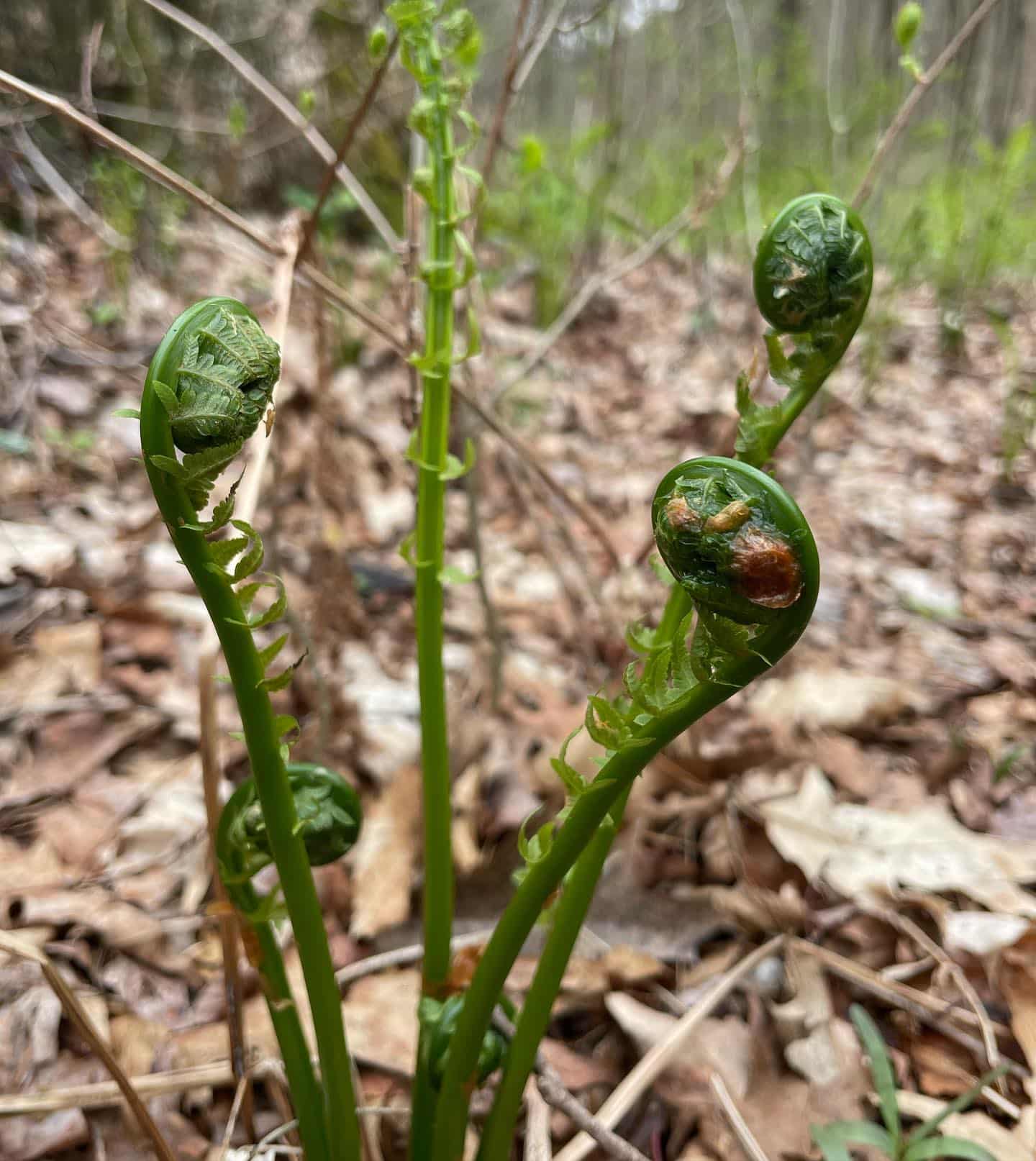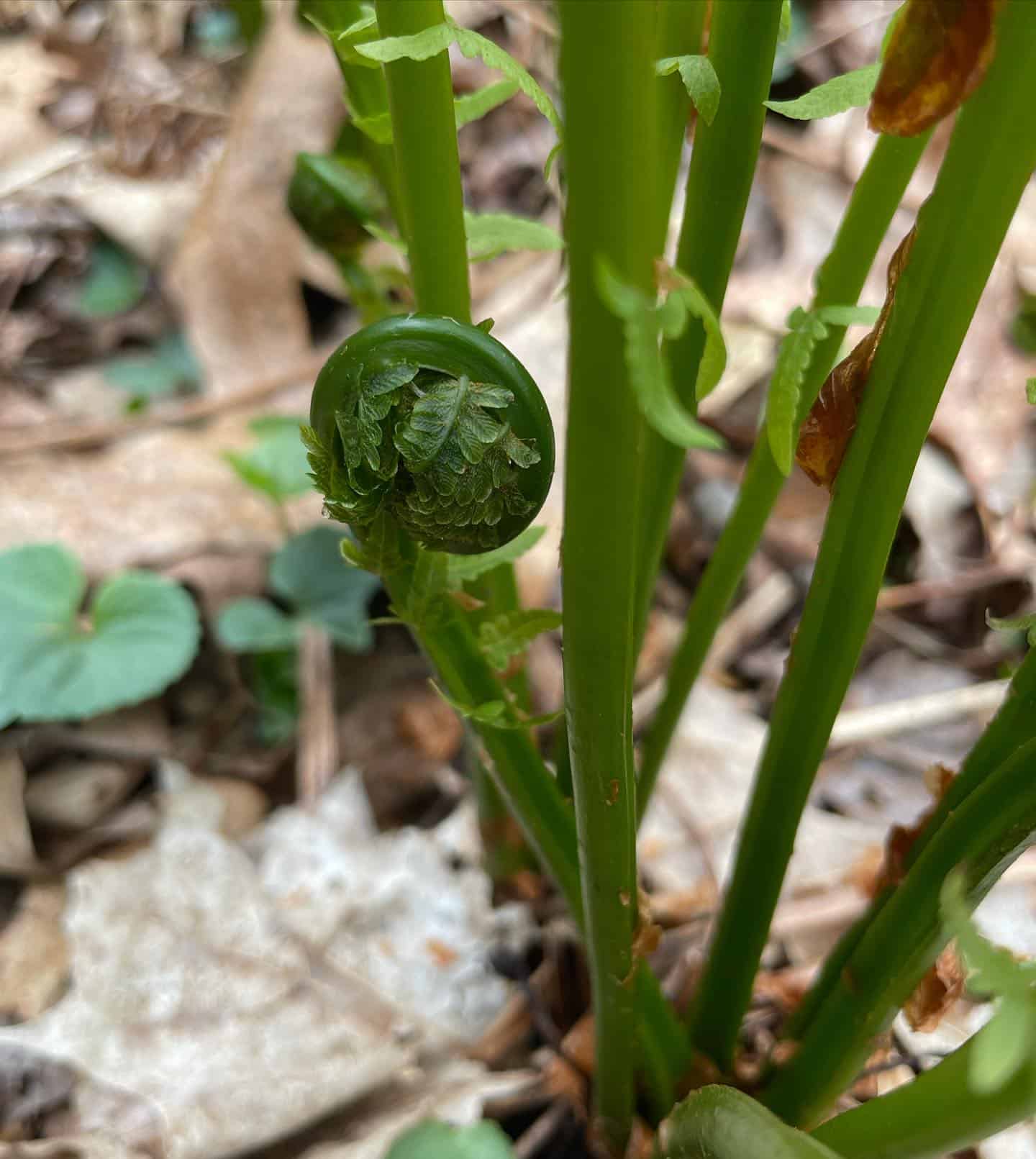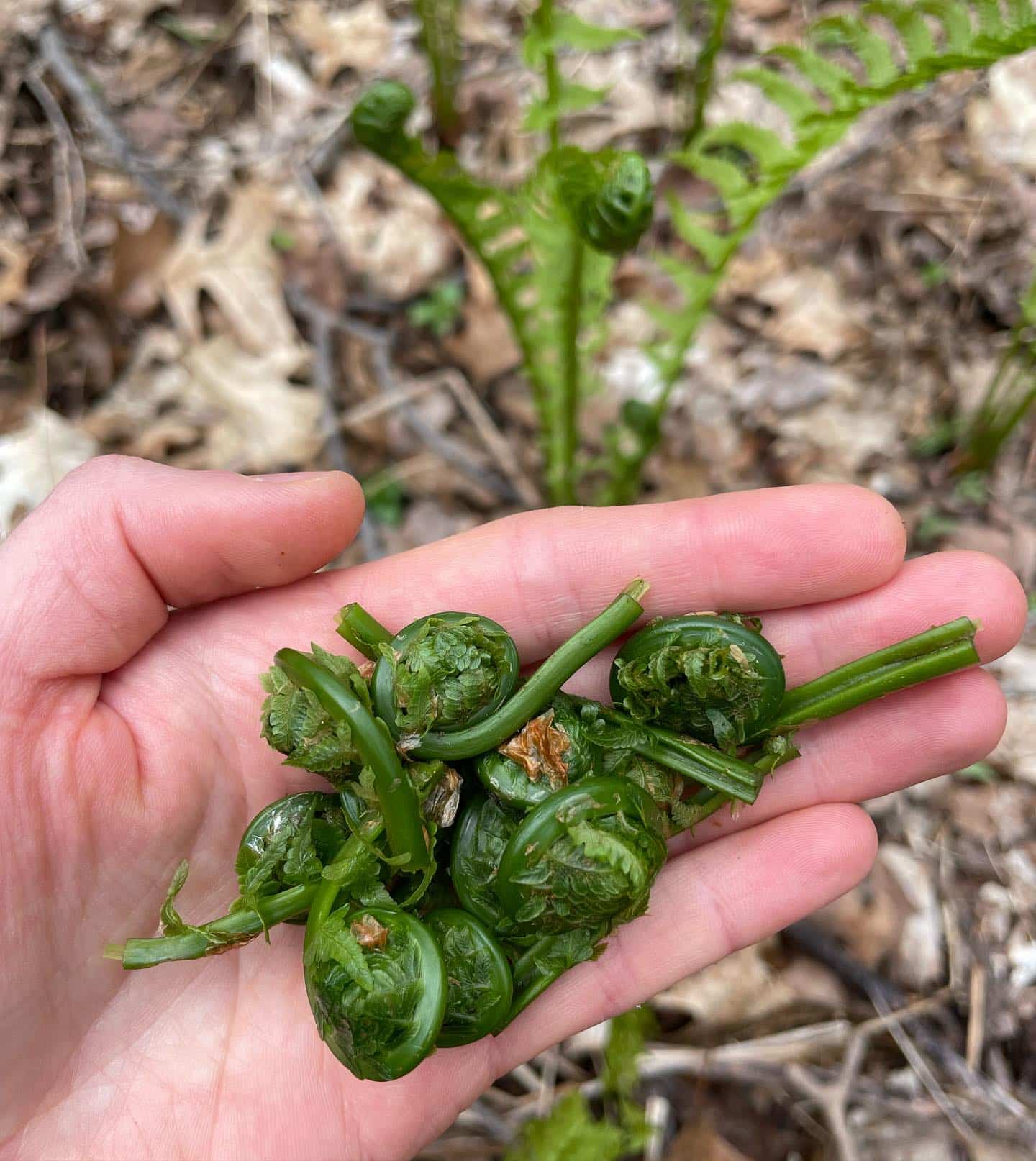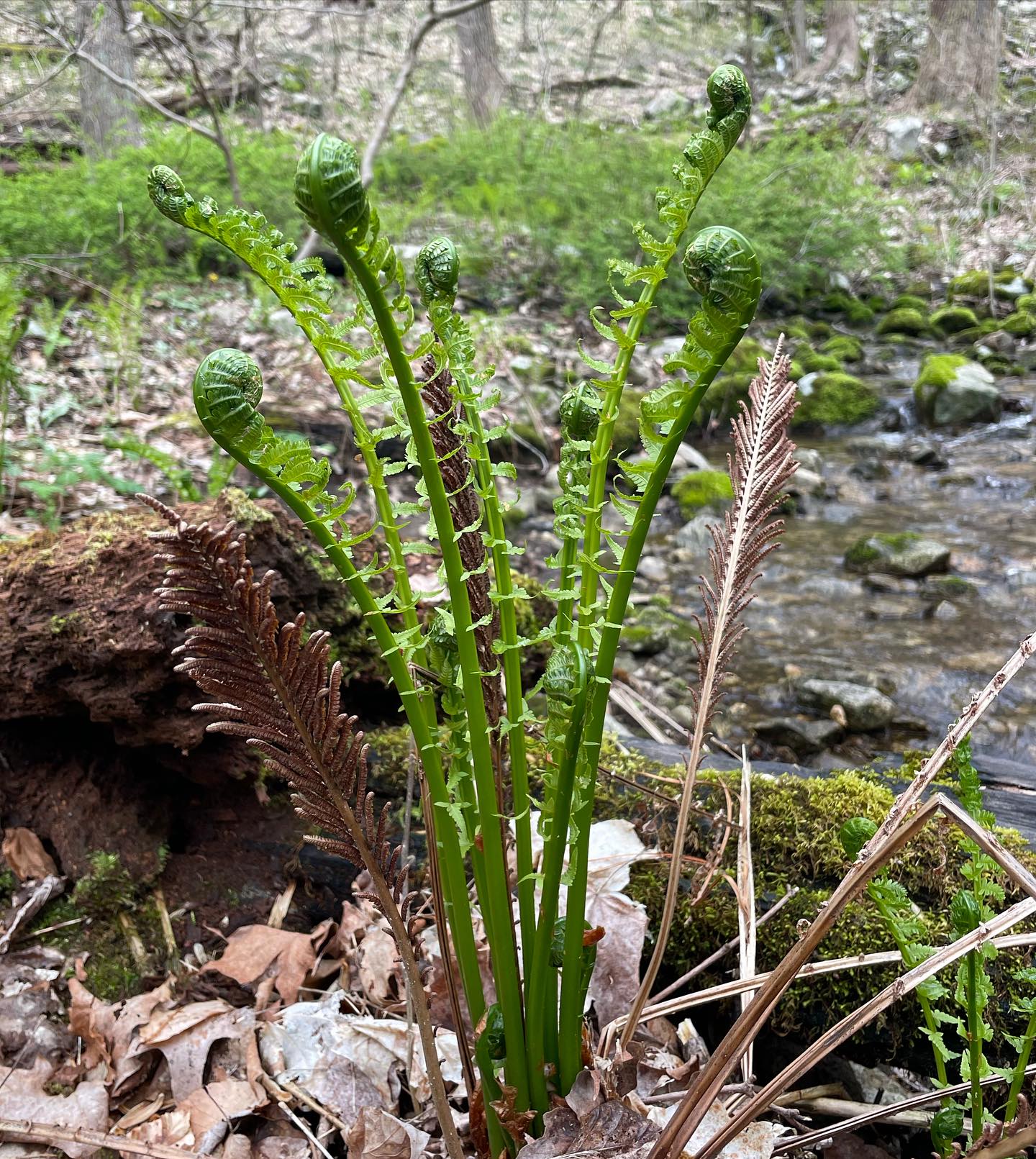Page Created by Connecticut Foraging Club
Upcoming Events | Meet the Instructors | Plant Archive | Mushroom Archive
----------------
Upcoming Events | Meet the Instructors | Plant Archive | Mushroom Archive
----------------
The Ostrich fern (Matteuccia struthiopteris) is the only fern in CT that produces edible fiddleheads in the spring. The fiddlehead is the immature, furled frond of a fern.

Ostrich ferns can be found in rich, disturbed soil. Check near water sources with wet, sandy soil. They are most common in river floodplains. Ostrich ferns can tolerate moderate shade to full sun.

Ostrich ferns produce fronds in a funnel-like rosette. There is a deep U-shaped groove running the length of the stem, similar to the groove in celery stalks. The fiddleheads should be tightly coiled and hairless. They sometimes have light brown papery scales.

Fertile fronds appear on the plant in the summer. This stalk produces spores, allowing the plant to reproduce.

Ostrich fern fiddleheads are only edible after cooking. They can be blanched and then sautéed, pickled, or dried. The flavor is unique, with a hint of asparagus.
Fiddleheads are high in vitamins A, C, B-complex, and carotenes.

Ostrich fern fiddleheads must be differentiated from toxic look-a-likes which have hair or fluff and lack the deep groove.
The ostrich fern is a native plant that could easily be over-harvested. A recent study showed that ferns harvested of all their fiddleheads every spring produced very few to no fiddleheads after 4 years. Ferns harvested of half their fiddleheads remained just as productive as if there was no harvesting. It is best practice to take only one fiddlehead per fern. Ostrich ferns are also a great native plant to grow in your yard!
--
Written by Amy Demers, founder of the Connecticut Foraging Club. To learn more about foraging in Connecticut, check out our upcoming classes.






